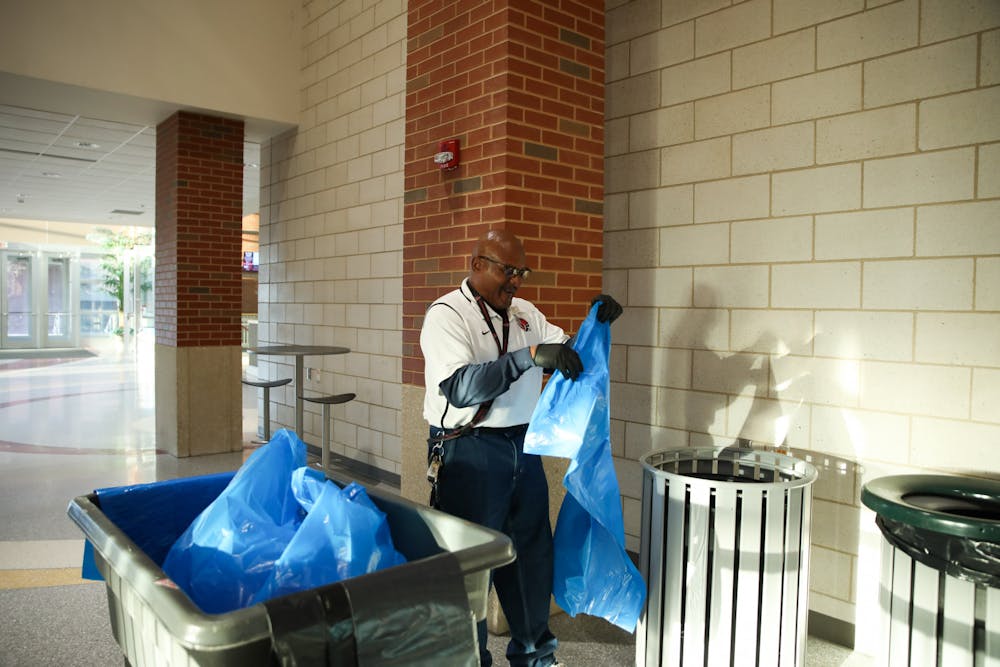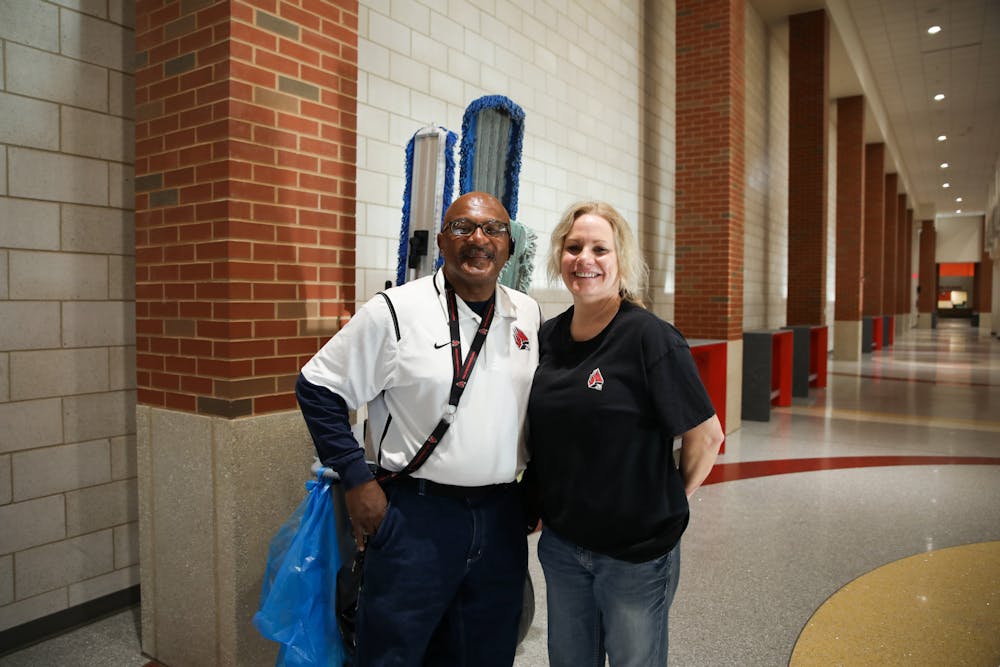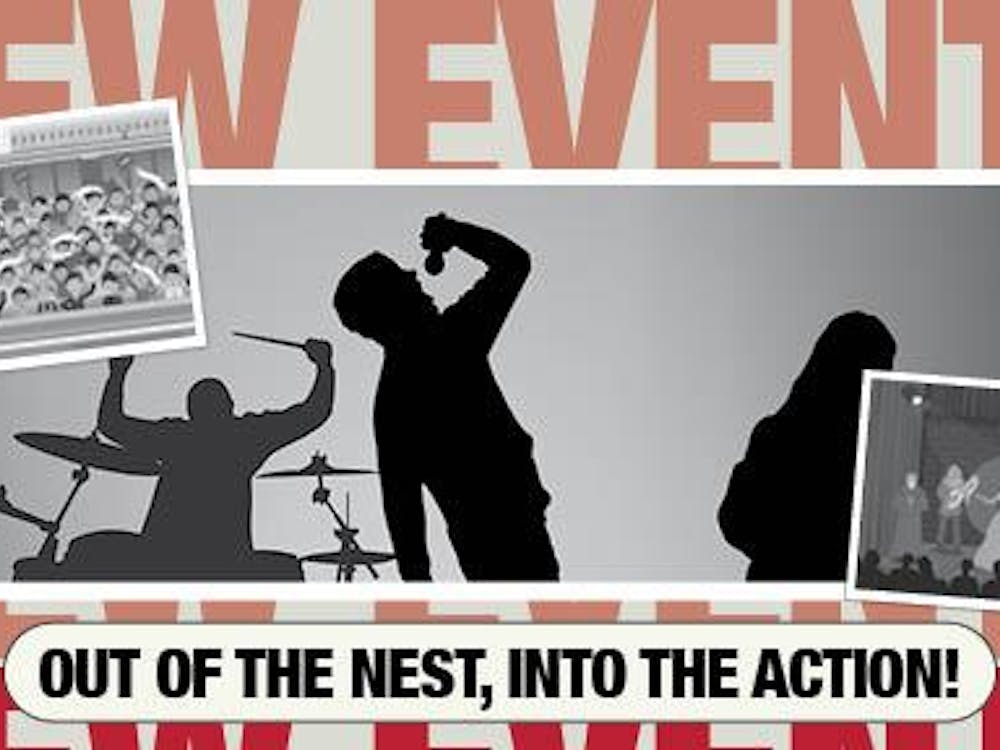Behind every game, every field and every meet at Ball State is a team of people: the sports facilities staff.
With 23 people and multiple events each day, it’s up to Philip Clay and the rest of the staff to get everything in order and provide a safe location for students to play. But this doesn’t happen without care, and that means making sure each event is as sustainable and environmentally friendly as can be.
Clay is the manager of sports facilities at Ball State, and he has been in the position since the department opened 31 years ago. As the manager of sports facilities, Clay said his job fits into three parts: a responsibility for custodial services, a responsibility for event and game day set-ups and takedowns and a responsibility for all outdoor athletic maintenance.
Clay grew up involved in sports, going from a ball boy as a kid to an usher and event organizer in college. Despite this, he majored in botany at Miami University (Ohio), so when Ball State offered him a job to be outdoors and help with sports, it was the perfect fit.
While Clay’s role is to cover all sports-related events, he said he is mostly involved in those outside, including soccer, baseball, football, etc.
Clay, along with other members of the sports facilities staff, is the one who picks up the trash after games. He said it usually takes about 10 to 15 people to clean up after an event, but it's different every time.
The sports staff tries to clean up as soon as they can after each game, but it’s not right away. Clay said the time to pick up after each game can vary, but it’s normally between two to five hours. Football games take much longer than basketball games, he said.
“We also throw it out there to our sports clubs to earn a little extra money for their club,” he said. “And they often come in and do major clean up stuff like after a football game or sometimes a basketball game, occasionally other events.”
These clubs include the gymnastics club, quad ball, an equestrian club, ultimate Frisbee and more.
The first step of the job is to get all the trash and recycling out. The staff tries to have recycling and trash containers next to each other, so they’re more easily accessible.

Gonzo Barajas, the senior director of auxiliary services for athletic facilities and events, said the staff places equal amounts of trash cans and recyclable receptacles in the venues.
“We also make announcements asking fans to deposit trash and recyclables in the appropriate containers,” he said.
On popular weekends like Homecoming and Family Weekend, Clay said football games often end up needing two 30-yard containers to pick up all the trash. At Worthen Arena, it often takes around 25 40-by-48-inch bags of trash to clean up. Sometimes that number can reach up to 40, according to Clay.
The better trash and recycling are sorted, the more likely they’re able to actually recycle the materials.
Due to federal regulations on the risk of bloodborne pathogens, the employees aren’t allowed to sort the recycling. Clay said there have been initiatives where students have volunteered to do it, but the staff isn’t allowed to due to the contamination factor.
“We obviously encourage people to get stuff to the containers, but sometimes our culture, for whatever reason, is not so good at that,” he said.
Clay said Ball State does a good job of recycling aluminum cans and plastic bottles, the items most often picked up, but other things, like glass, aren’t so easy. Glass containers are prohibited, but sometimes people still sneak them in, so if they get broken glass in the bag, they have to throw it all away.
Glass is more of a concern in the tailgate lot where Mike Planton, the director of landscape services at Ball State, is in charge.
When it comes to trash, Planton said the tailgate lot is worse than the lots around the stadium.
“We’d have people dump hot grills and set them on fire, it’s pretty amazing,” Planton said. “Usually, the police are here, so they’ll get it out, but whatever is in there, it’s trash, so we just have to throw it away.”
Though it changes per game, Planton said they usually collect about 20 to 30 cubic yards of trash. Once they’re done, Best Way Disposal takes the trash and recycling for them. All recycling goes to East Central Reporting, according to an employee at Best Way Disposal.
Along with focusing on the importance of recycling, Clay and other members of the staff try to incorporate ways to improve sustainability into their work.
“Sustainability and environmental protection is very important to me, so I personally think about how we do things as far as taking care of our spaces and taking care of the Earth,” Clay said.
One thing Clay focuses on is the materials and products he uses when preparing the soccer fields. He uses a zero percent volatile-organic compound (VOC) paint, meaning that it’s “ultra-friendly” and not hazardous to the ground.
Clay also uses organic fertilizers when treating the natural grass fields.
“The better that you maintain a natural surface field as far as your cultural practices — mowing, aerification, seeding, fertilizer — when you maintain your fields at a higher level, then you can limit the amount of herbicides and insecticides that we use on a field,” he said.

In 2012, Ball State was one of the first schools to move from using a coal power plant to a geothermal heating and cooling system, something that impressed Clay. According to the U.S. Energy Information Administration, geothermal power plants use about 99 percent less carbon dioxide than fossil fuel power plants. According to the National Renewable Energy Laboratory, over 650 schools signed up to make this change in 2020.
Clay was also happy with Ball State’s switch to LED lights at Scheumann Stadium. According to the Department of Energy, LEDs use up to 90 percent less energy than traditional incandescent bulbs. LEDs also last 25 times longer.
While Clay enjoys helping the environment and preparing for events, he said the amount of coverage can be overwhelming. There are less than 30 staff members in sports facilities, according to Clay, and they’re in charge of almost all sports-related events, including the Recreation Center, Muncie Burris athletic events, Ball Gym, theatre and dance, etc.
No matter what, the event locations have to be prepared and in good condition, whether they have the people to handle it or not. Clay said the staff manages a lot of patrons and events, but they consider everyone a priority.
Weather can also be a big factor in the setup and teardown of events. Sometimes it will rain just after Clay has painted or cleaned off a field, so they’ll have to wait until it stops, but then, it may happen again. Clay said it’s challenging, but he enjoys being able to put students in a position to be successful.
“I think we’re as responsible as we can be as far as energy used and products used. We try to recycle the best we can,” Clay said. “It’s hard in an event setting. If you could get anyone to walk and put it in the container, it’d be easier.”
Contact Lila Fierek with comments at lkfierek@bsu.edu.





